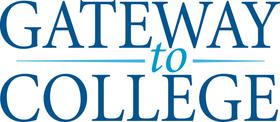The Future of Community College Education: Trends to Watch in 2025
As we move through 2025, community college education in the United States is experiencing a meaningful resurgence. After years of uncertainty, two-year institutions are once again at the forefront of growth, innovation, and service to a diverse population of learners. This article examines the key trends shaping the future of community college education in 2025, offering insights for parents, students, and educators.
1. Enrollment Rebound and Rising Demand Enrollment Recovery
According to the National Student Clearinghouse, undergraduate enrollment rose by 3.2 percent in spring 2025, adding 562,000 students, with community colleges driving much of this growth. Higher Ed Dive
Preliminary fall 2025 reporting shows community colleges led with a 4.0 percent boost, compared to smaller gains at four-year institutions. CC Daily
Final data for fall 2024 confirmed a 5.8 percent increase at public two-year colleges, significantly higher than earlier estimates. CC Daily
This rebound illustrates that community college education is reclaiming momentum, attracting both traditional-age students and non-traditional learners.
Who Is Returning—and Why
Dual enrollment continues to surge: more high school students are taking courses at community colleges, serving as a bridge into community college education pathways. Community College Review+1
Older learners and adult students are returning as workforce needs and affordability push them toward flexible options within community college education.
2. The Rise of Short-Term Credentials and Career Pathways
One of the most transformative trends in community college education for 2025 is the growing emphasis on short-term credentials.
Credential awards in spring 2024 increased by 10.3 percent year-over-year, per data cited by the League for Innovation. League
Younger students (ages 18–20) are embracing career-focused certificates, not just adults reskilling. League
Many colleges are adopting a “one front door” admissions model, giving students access to both short-term credential tracks and traditional degree pathways. League
These developments suggest that community college education is becoming more responsive to labor-market demands, meeting learners where they are and helping them ladder into longer programs if they choose.
3. Transfer Enrollment Surges
Transfer activity is another major trend reshaping community college education in 2025.
Transfer enrollment rose 4.5 percent in recent reporting. Inside Higher Ed
Since 2020, transfer students from community colleges to four-year institutions are up 13.5 percent, showing that two-year schools remain a critical bridge in higher ed. Inside Higher Ed
Interestingly, not all transfer movements are upward: there’s growth in “lateral transfers” (from one two-year institution to another) and even students moving from four-year to two-year colleges. Inside Higher Ed
These trends reinforce the role of community college education as a flexible, accessible gateway for a wide variety of academic and career goals.
4. Equity, Access, and Diversity
Community college education continues to be a cornerstone of equity and access in U.S. higher education.
According to the AACC Fast Facts 2025, 39 percent of all U.S. undergraduates are enrolled in community colleges. CC Daily
Enrollment gains are particularly strong among Hispanic, Black, and multiracial students, expanding the reach of two-year institutions. CC Daily+1
Many community colleges are prioritizing outreach to first-generation students, underrepresented minorities, and adult learners—populations historically underserved in higher education. Community College Review
Through these efforts, community college education in 2025 is reinforcing its foundational role as a gateway for opportunity.
5. Innovation in Teaching and Technology
Technology and pedagogy are advancing rapidly in community college education, opening new paths for teaching and learning.
AI Literacy and Digital Skills
Emerging research is highlighting how community college instructors are teaching AI literacy. A recent study explores scenario-based and interactive approaches to help non-STEM students understand AI’s real-world impact. arXiv
As AI tools become more common in daily life, community college education programs are increasingly integrating curricula that prepare learners for an AI-driven workforce.
Predictive Analytics and Equity
Another study explores the use of fair, privacy-aware predictive analytics to improve student retention in community college education. arXiv
Such style="line-height:1.38;margin-top:0pt;margin-bottom:0pt;">
6. Financial Pressures and Policy Dynamics
While demand is rising, community college education still grapples with financial and policy uncertainties.
Many students rely on federal aid (like Pell Grants), but proposals in Congress could tighten eligibility or reduce aid. (Policy observers are watching these developments closely.)
At the institutional level, colleges face budget pressures—especially as they scale up enrollment and program offerings.
Despite these challenges, the ongoing demand for community college education suggests that policy investments may pay off in broadening access to affordable, high-quality credentials.
7. Looking Ahead: Strategic Priorities for 2025 and Beyond
Based on current trends, here are key strategic priorities for community college education in 2025:
Priority Area Implication for Community Colleges Scaling credentials Build more short-term, high-demand credential programs with clear pathways to degrees Strengthening partnerships Deepen transfer agreements and dual enrollment ties with K–12 and four-year institutions Investing in tech & data Expand AI literacy curricula; deploy fair predictive analytics to support retention Supporting equity Allocate resources to underserved and underrepresented student populations Advocating for funding Engage policymakers on aid, access, and sustainable models for two-year sectors Conclusion
In 2025, community college education is not just bouncing back—it’s evolving and redefining its role in America’s higher education ecosystem. From robust enrollment gains to innovative credential models, increased transfer activity, and enhanced technological integration, two-year colleges are adapting to modern student needs and labor-market demands.
For parents, students, and educators, the future of community college education offers both promise and challenge. As colleges navigate financial, policy, and equity pressures, their success will depend on staying agile, style="line-height:1.38;margin-top:12pt;margin-bottom:12pt;">If current trends hold, by the end of 2025, community college education could very well emerge stronger, more accessible, and more essential than ever.















